While I’ve always loved gardening, I only recently discovered my love for native plants. I used to think native plants look dry most of the year (with maybe some colors in the spring; mostly pastels and small blossoms) until my family and I planted our own garden filled with them.
A few years ago, when the drought was hitting California especially hard (again), we decided to turn our ugly, brown lawn into a more appealing (but still water saving) landscape. A friend recommended a landscape designer that specializes in California-native plants. Her enthusiasm for creating a wildlife habitat that would meet my love for bold colors convinced us to let her do the job. After all, she had a lot of experience, which was helpful in picking the right plants for the sunnier and shadier areas. She designed the garden so that, nearly year-round, something would be blooming (less in fall and winter, but abundant in spring and summer).
Her instructions included what watering system to use and how often to water. The only thing we had to do was pick the color of the slates for the pathway and the boulders.
Then, we waited.
You see, the best time to plant a native garden is in fall, right before the rainy season. Most of our plants came in one-gallon containers, which let the newly-created garden look very scanty. Thanks to all the rain during the winter, the plants had a chance to develop a deep-root system, but they barely grew above the ground.
Once spring came around, the plants started to grow and by mid-spring we already had a burst of colors. This picture shows our native garden in May of the first year.
There are still some California poppies (eschscholzia California) around, after blooming extensively since late winter. In the back, sulphur buckwheat (eriogonum umbellatum) is gleaming bright yellow. Seaside daisy and beach aster (erigeron glaucus) on the left, as well as clusters of foothill penstemon (penstemon heterophyllus) in the front, and cedros island verbena in the back, adding pops of purple.
Close to the house, roses can be seen in full bloom. While these have to be watered once every three days or so, our newly created native garden will only need water once every three weeks once established, meaning from the third dry season on.
Two months later, in July (photo above), the color palette has changed to a more red appearance, produced by California fuchsia (epilobium canum). A little bit of white in the middle is added by native Yarrow (Achillea millefolium). The purple-blooming plants are still happily prolific!
The second spring brought even more color due to bigger plants.
And by the second summer, the garden looked well-established, but, established does not mean done. The red buckwheat (eriogonum grande var. rubescens) in the front was a new addition from the same year.
One more look at the seasons: mid-October, the garden looks a bit wild with the California fuchsias blooming now for over three months with their abundant, red color. Summer grasses are still blooming as well and are adding a different texture to the appearance.
Nearly year-round, some plants are always blooming. Early January, the little manzanita tree (arctostaphylos) is already offering valuable nectar for hummingbirds and bees.
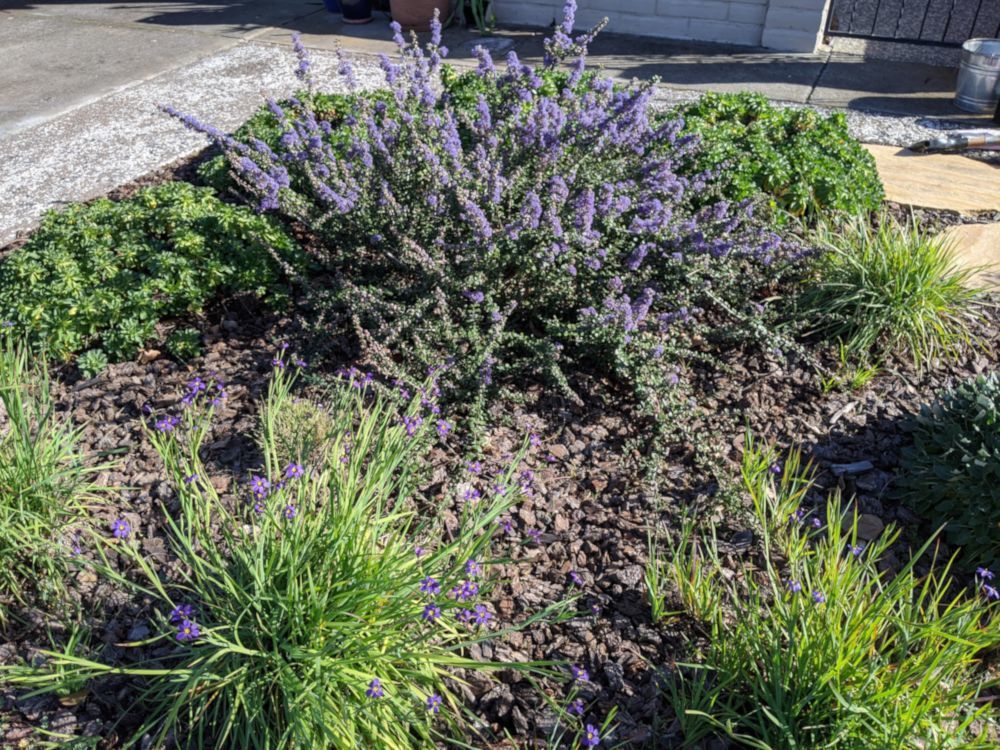
Beginning in February, blue-eyed grass (sisyrinchium bellum) starts to produce many delicate bright blue, star-shaped flowers with gold centers, while this smaller California lilac (ceanothus maritimus) is covered with spectacular clusters of dark-violet flowers. Many beneficial insects and pollinators, like bees and butterflies, are attracted to this firework of blossoms.
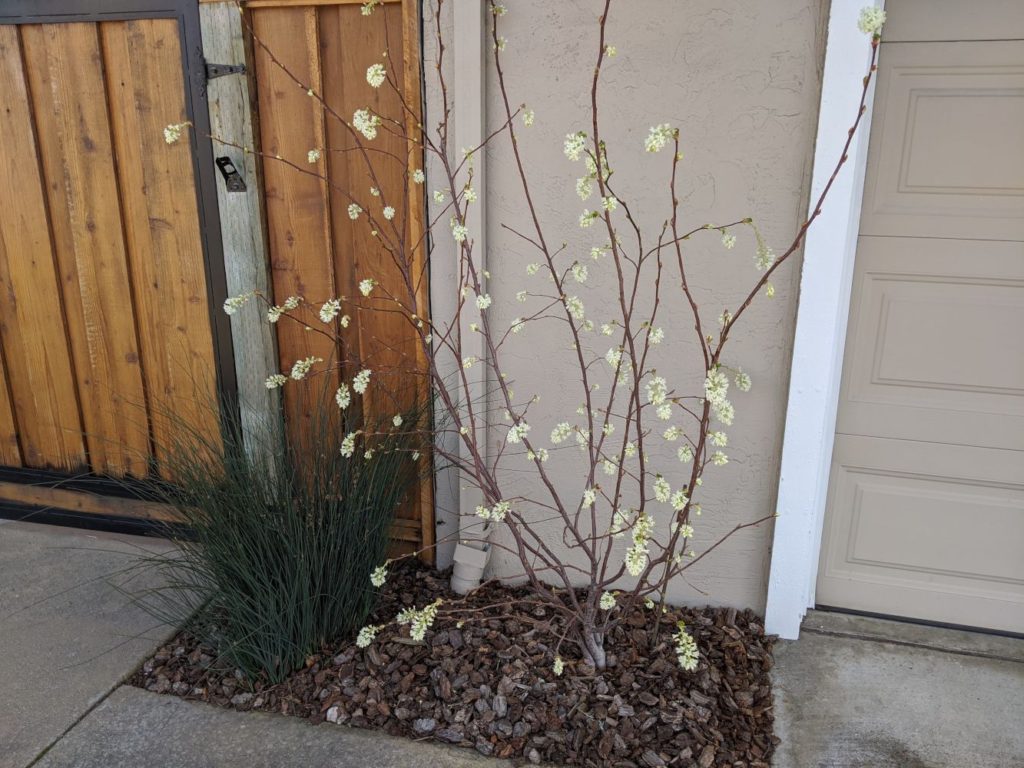
This native currant (Ribes sanguineum) is another gem, with its hanging clusters of white flowers blooming in early February, flowering before its leaves start to emerge. Next will be California poppies with their bright orange flowers, followed by purple blooming penstemon.
A native garden not only provides a valuable and much-needed habitat for bees, butterflies, hummingbirds, and beneficial insects, but it’s also a pleasure for all senses: the smell of sage (salvia) in the heat of the summer, the humming of the insects allowing you to feel as if you are in the middle of the woods, and all of the colors – all are a feast for the eyes!
If you feel inspired to see gardens with native plants in the Bay Area, consider attending the Going Native Garden Tour, which takes place in early May. Once you register, you will get a list with the gardens that can be visited a few weeks before the event. In most cases, you will have a chance to speak to the homeowners about their experiences, which makes this tour more personal than visiting a botanical garden.

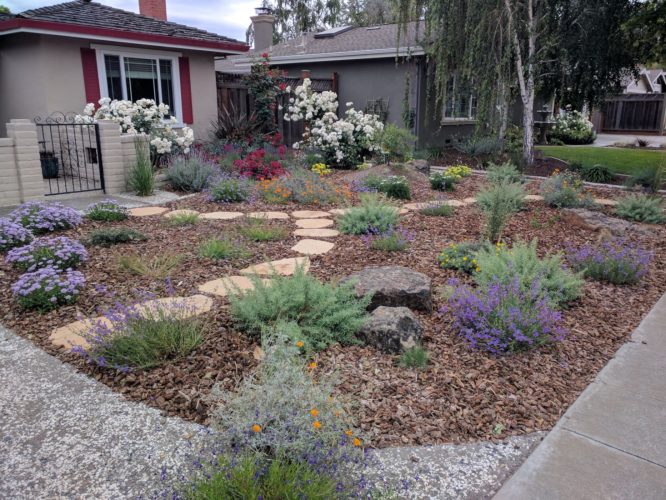
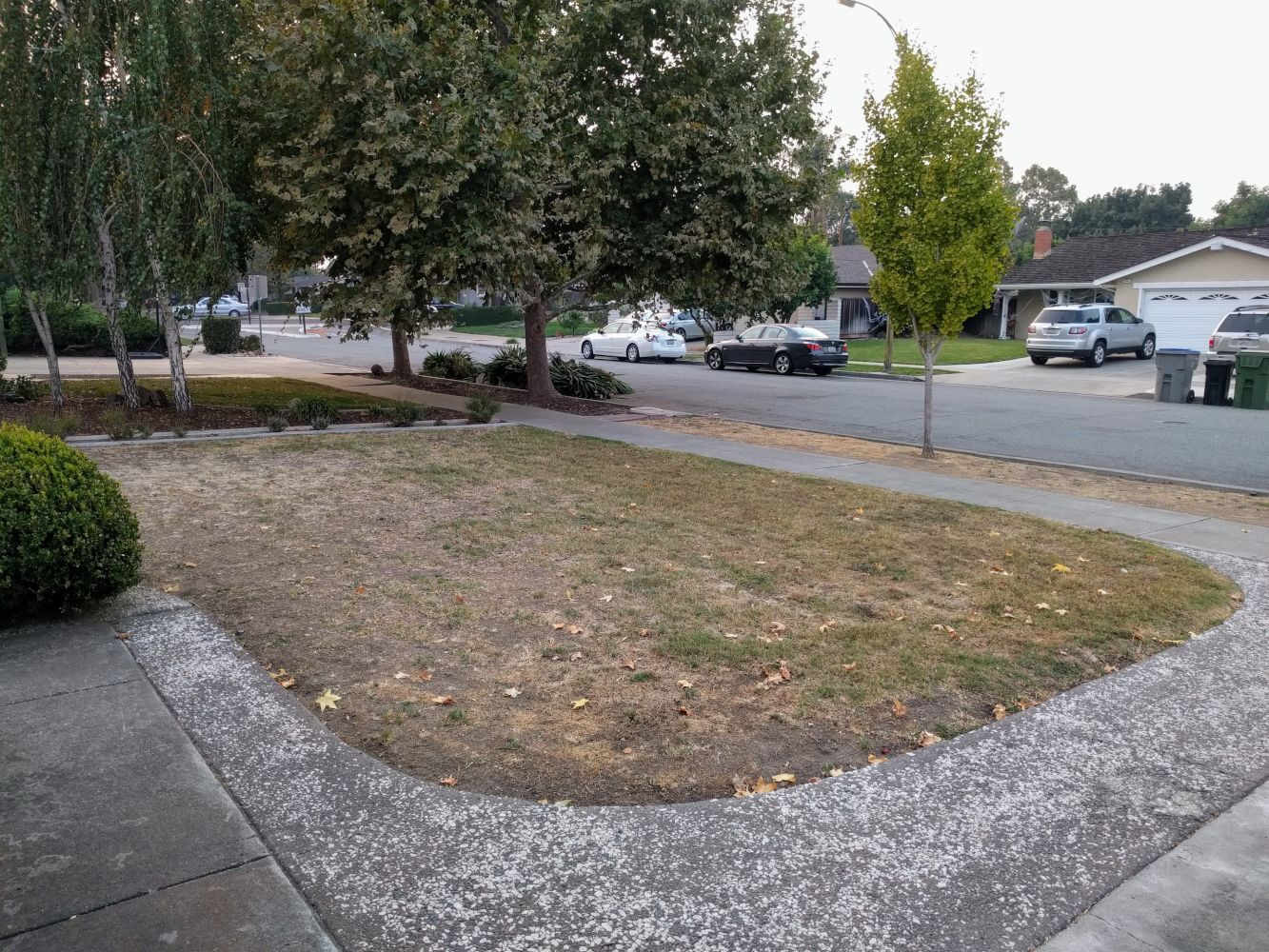
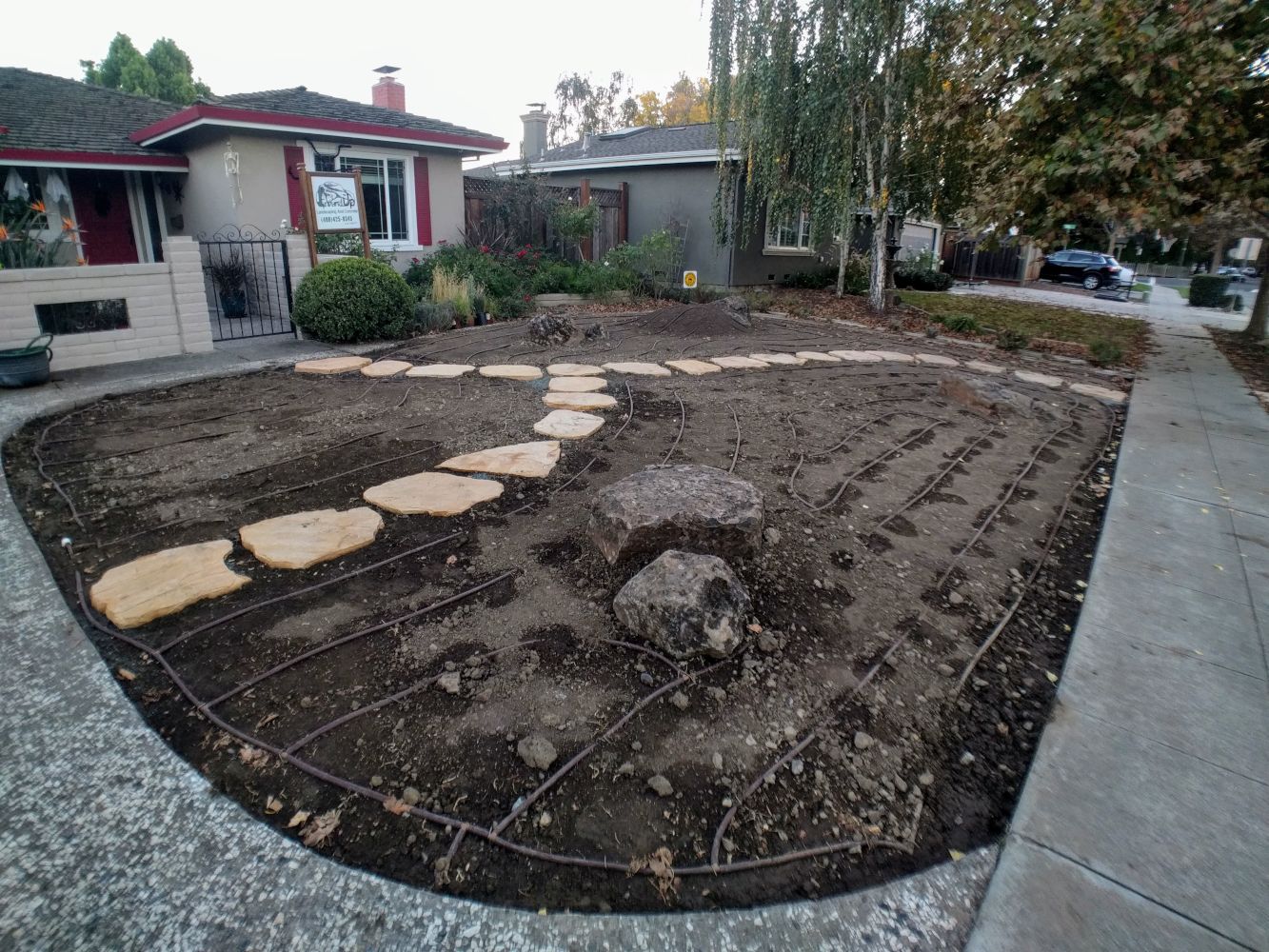
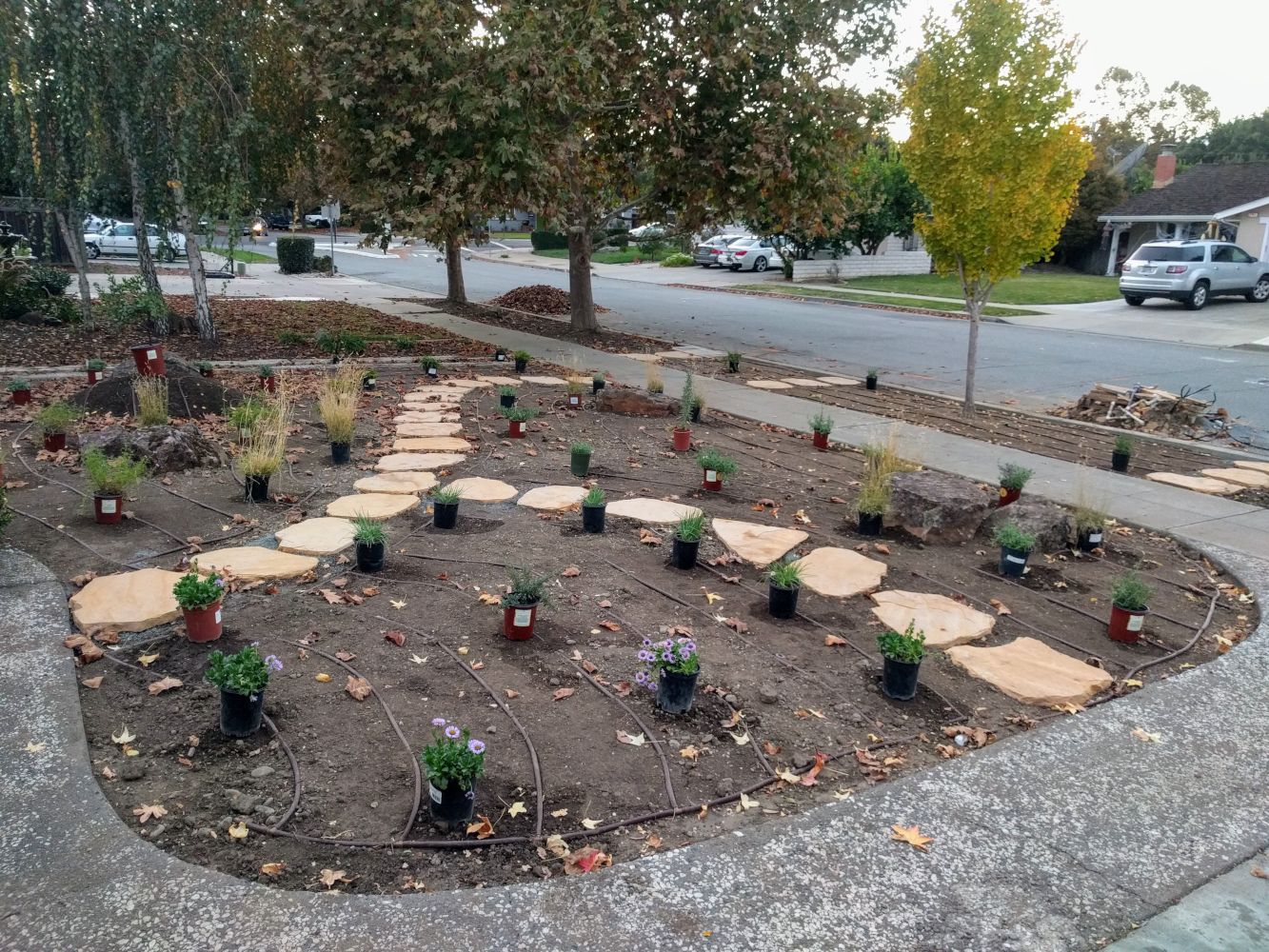
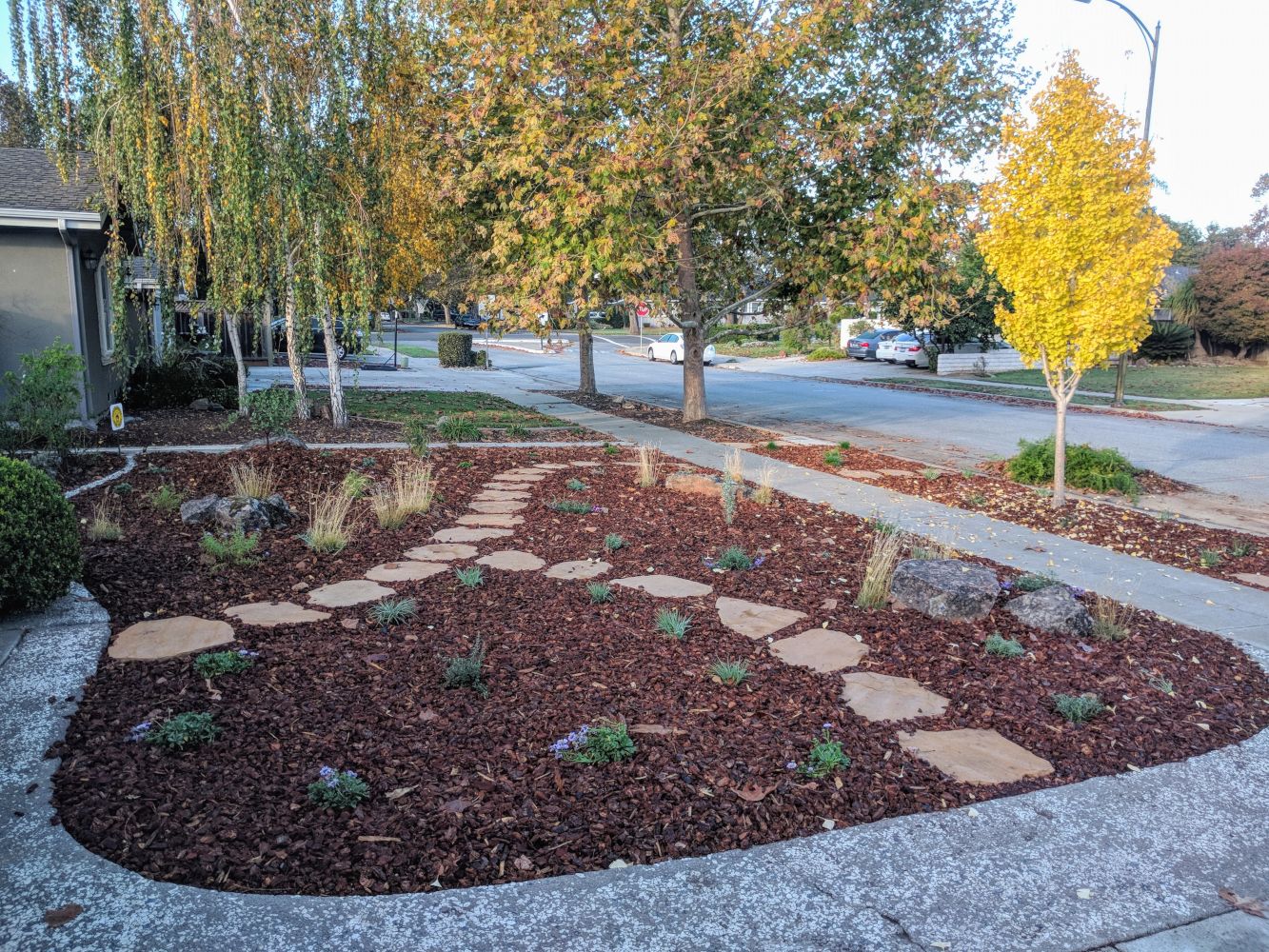
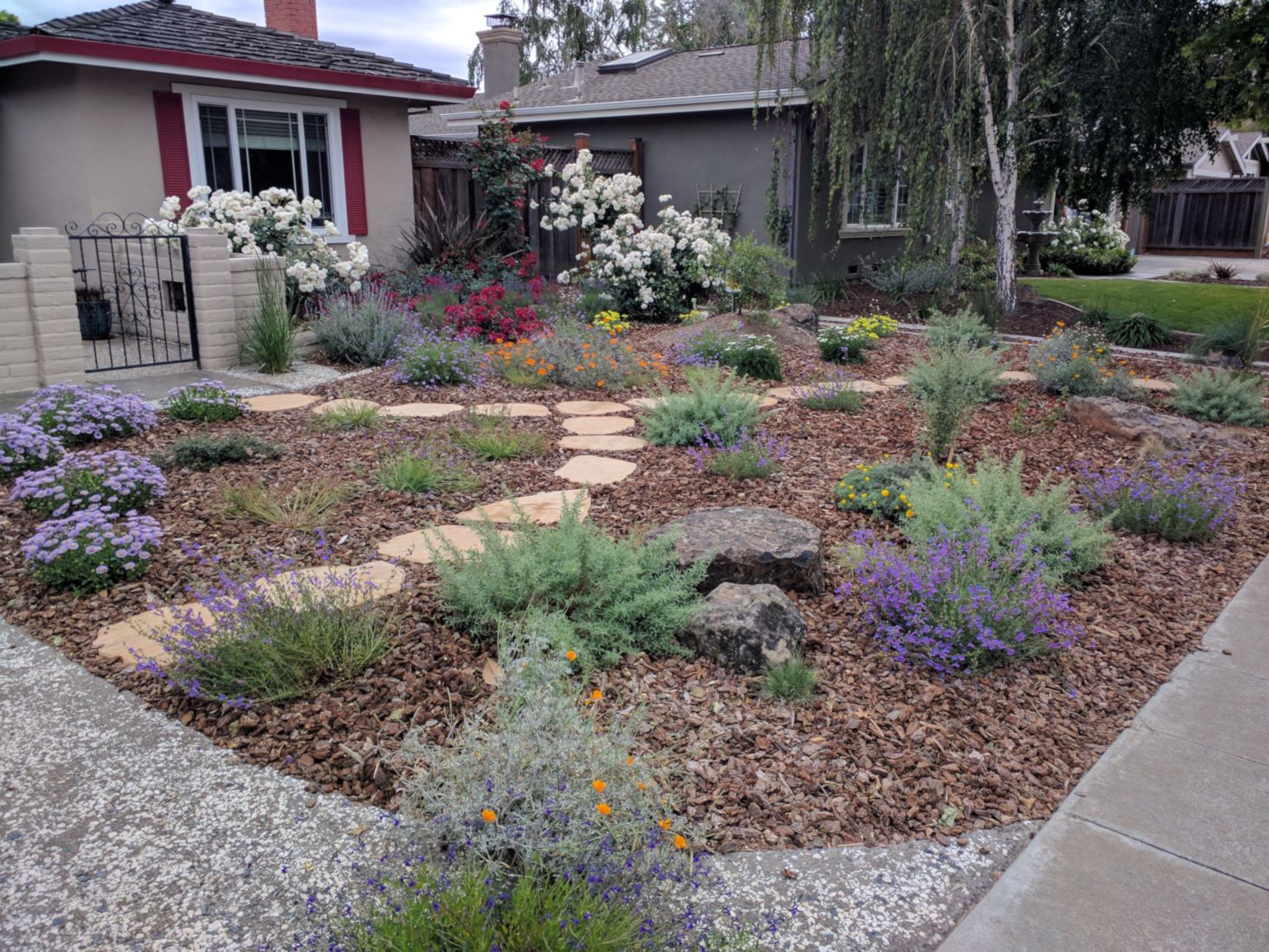
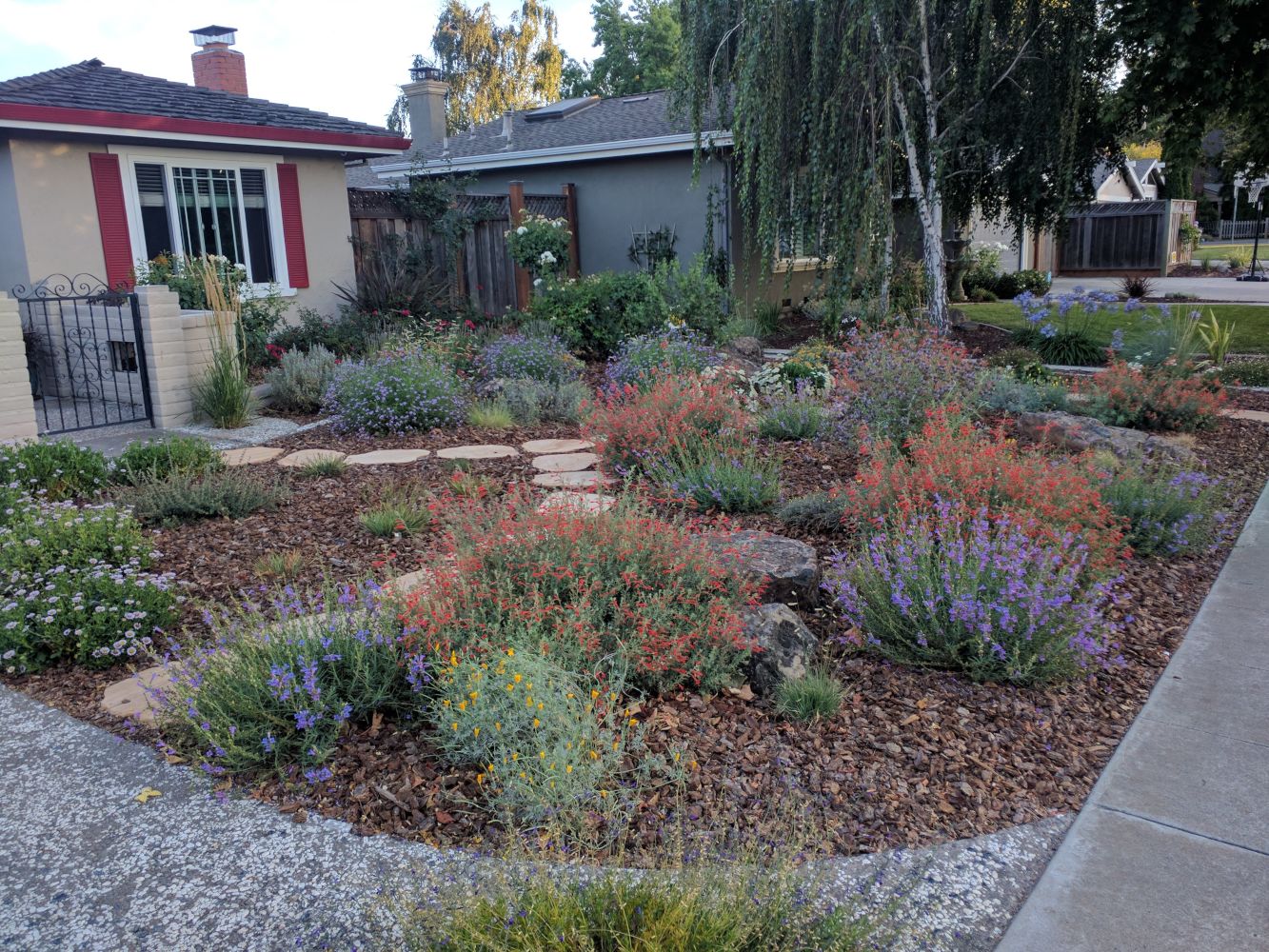
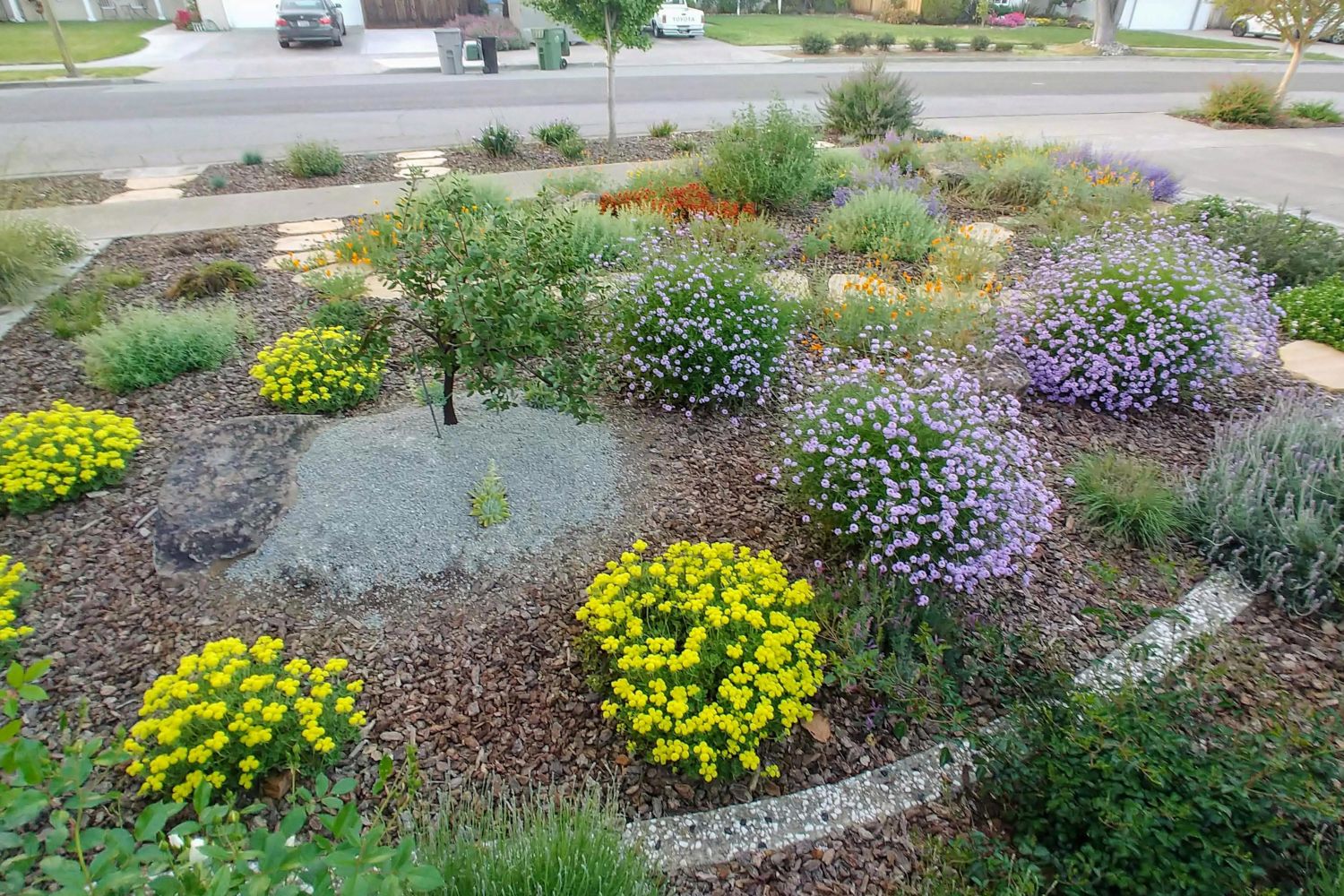
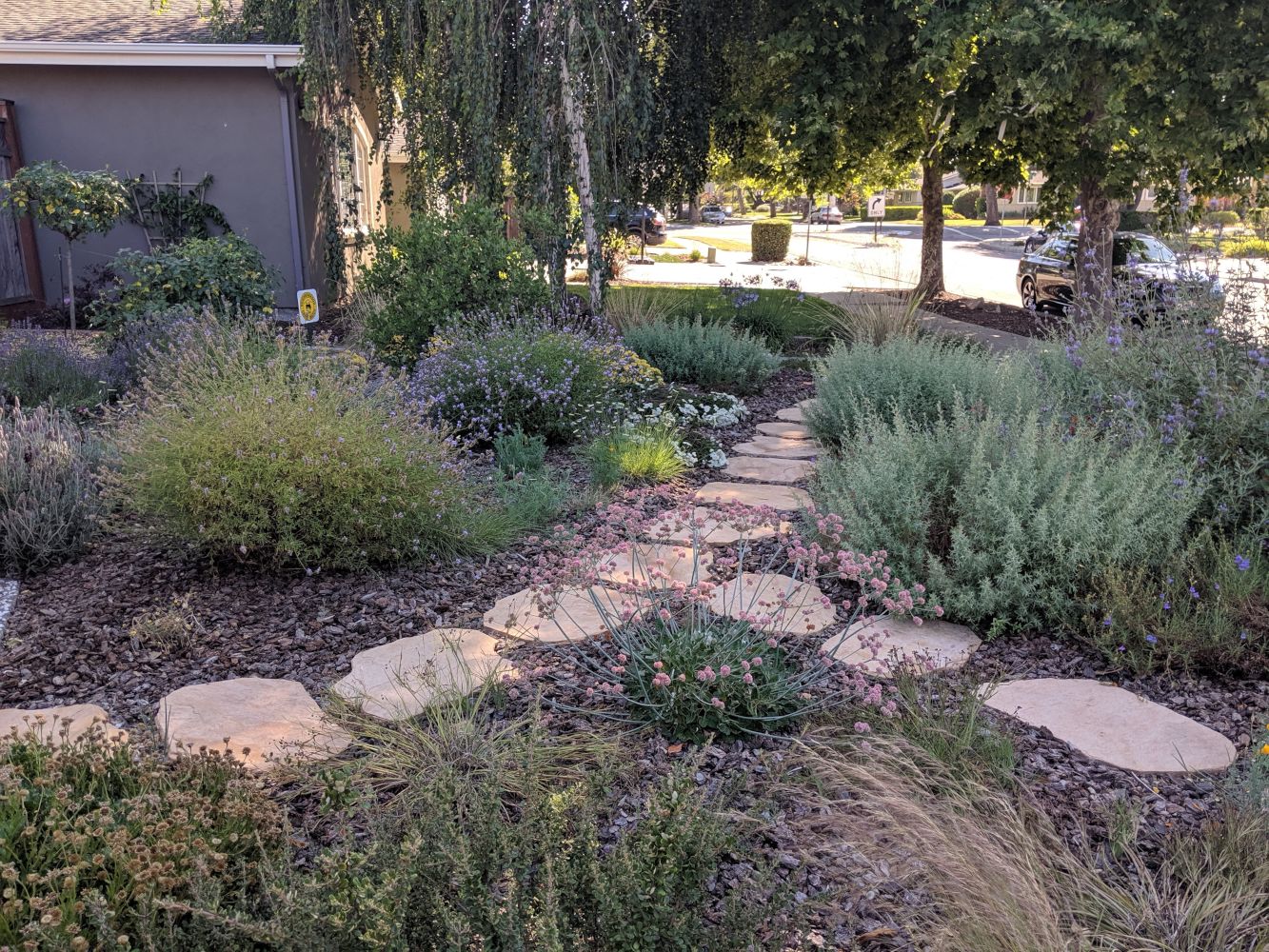
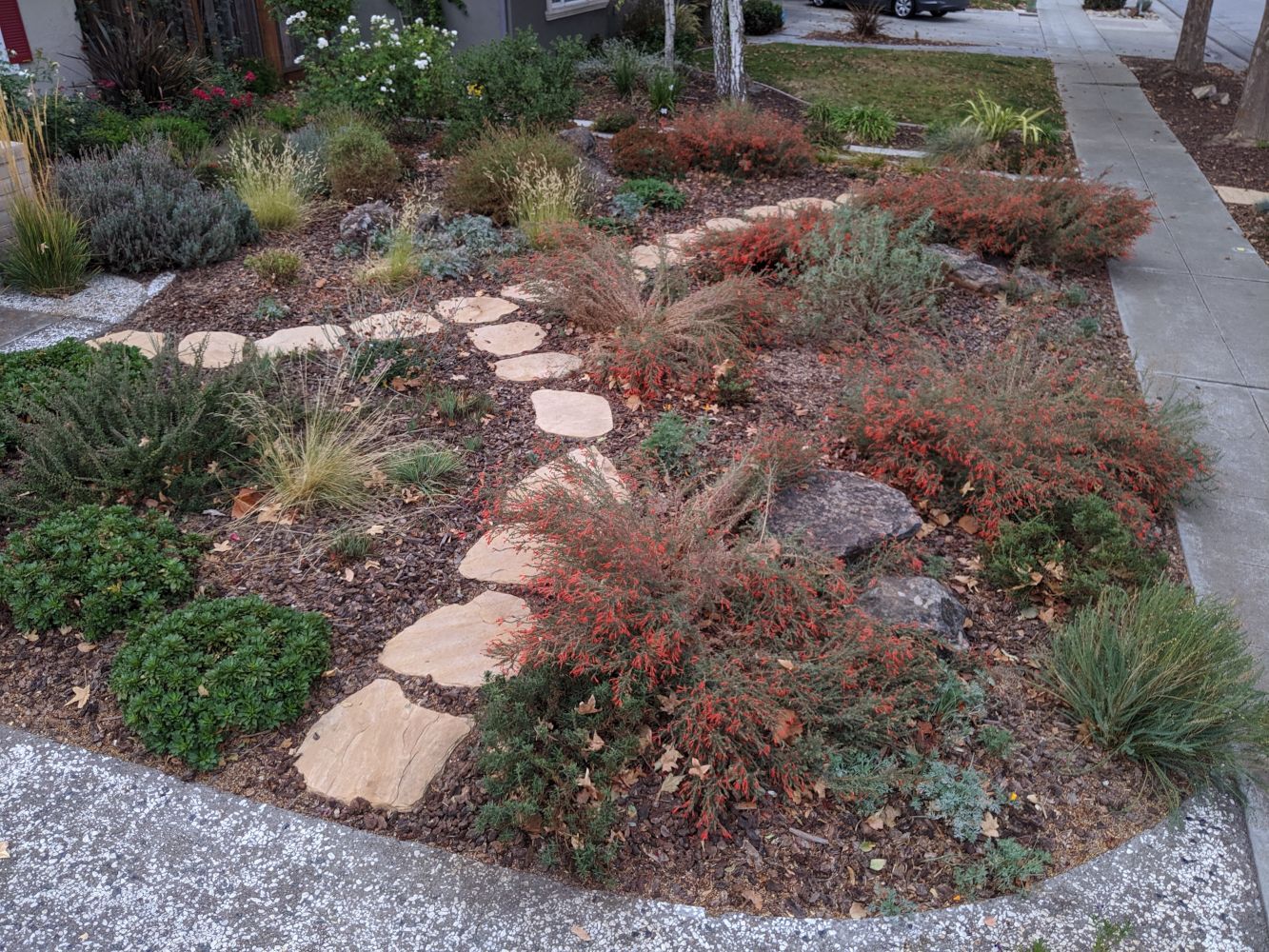
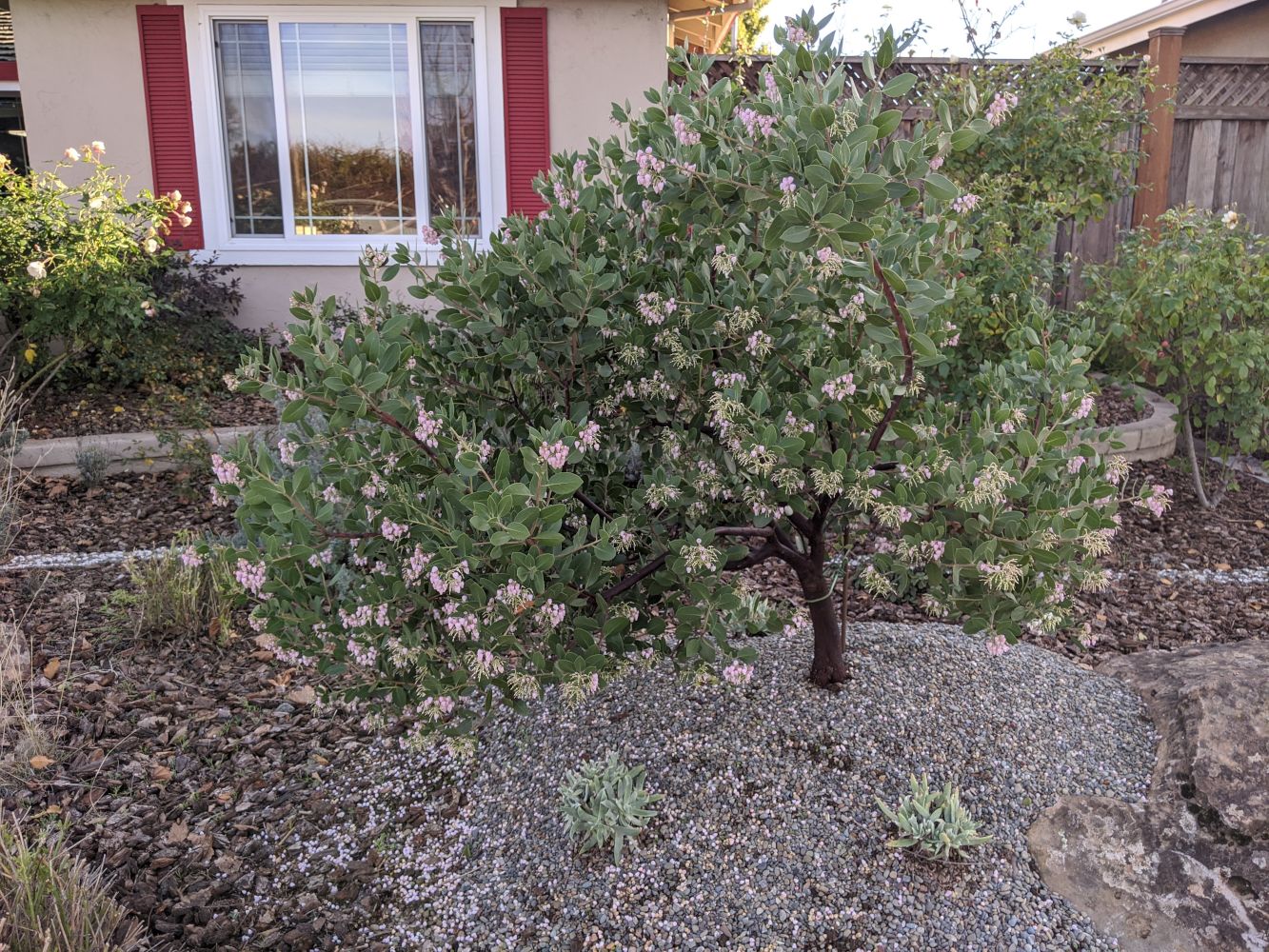







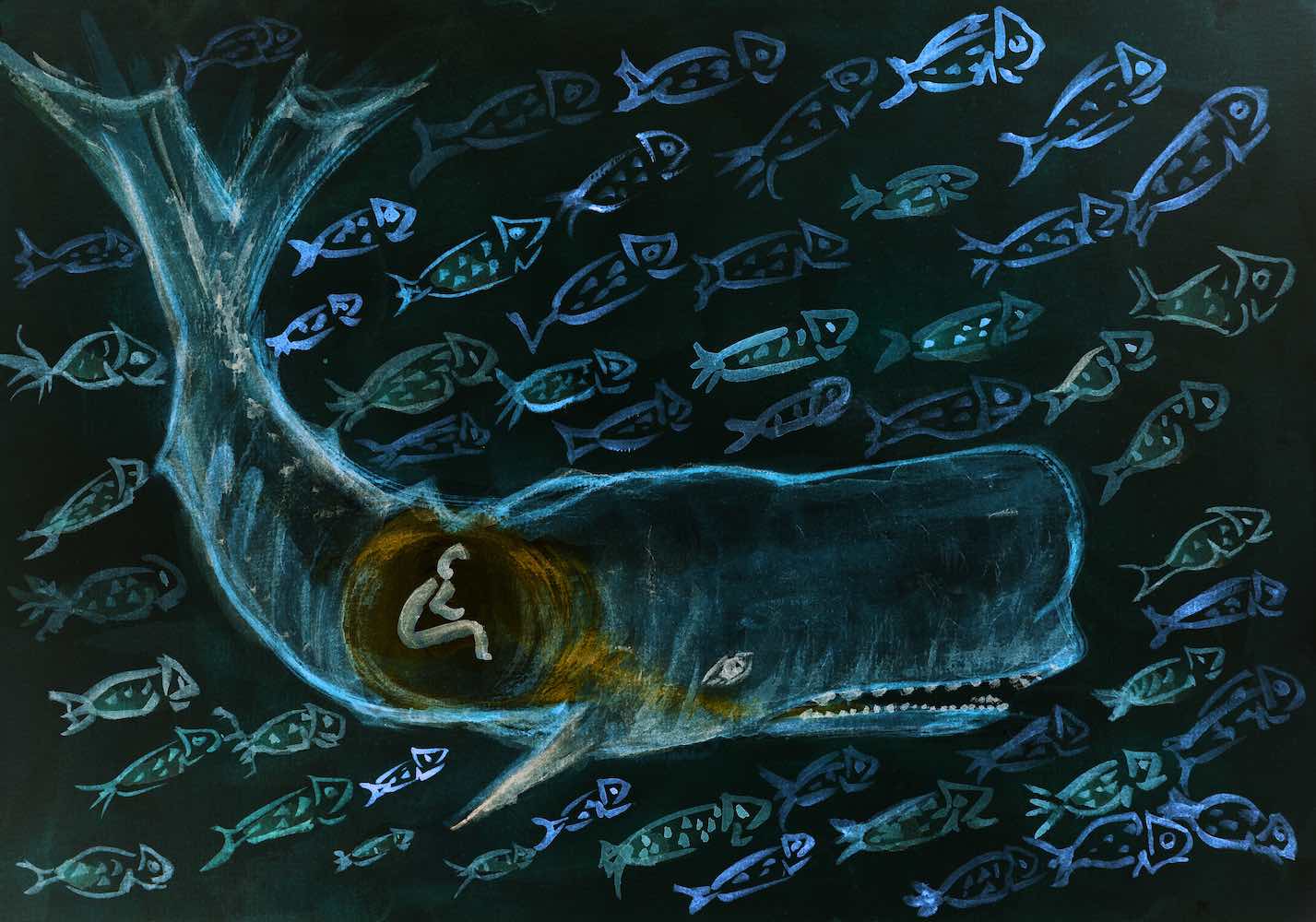
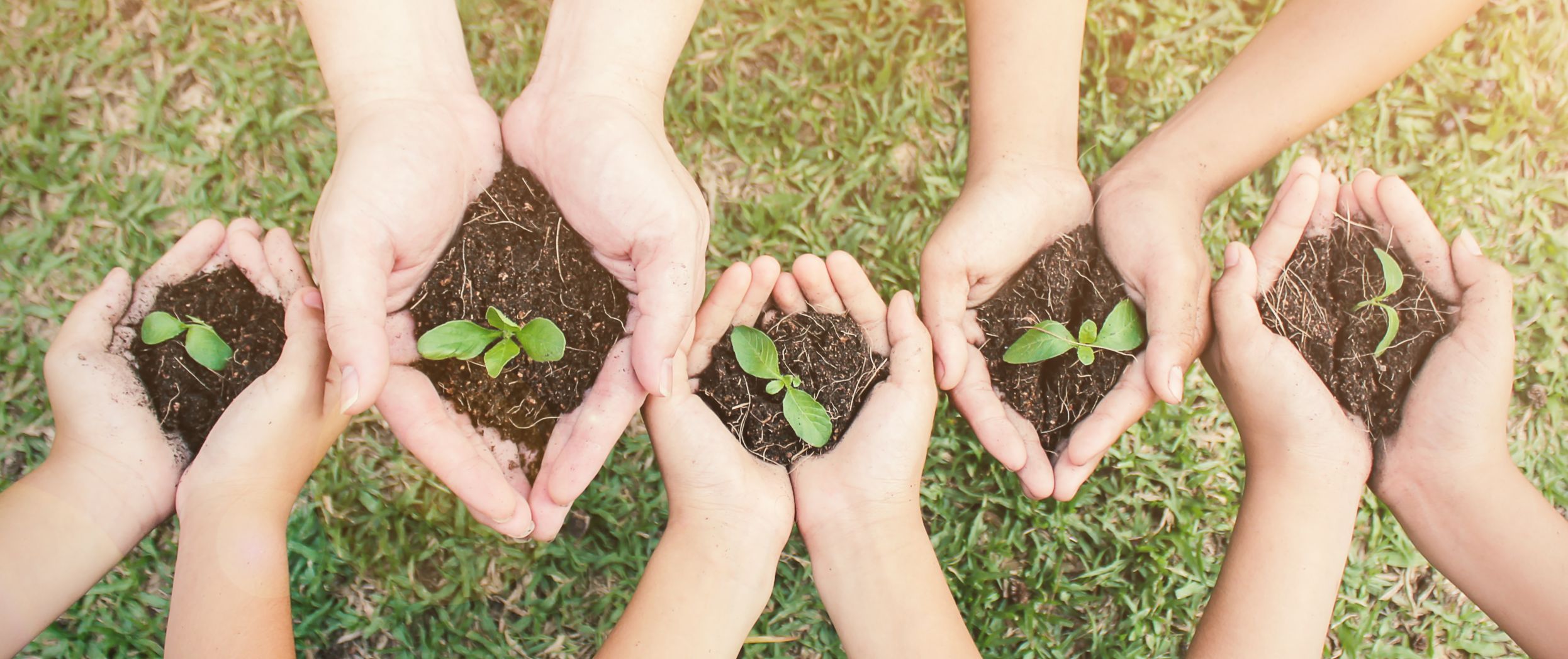
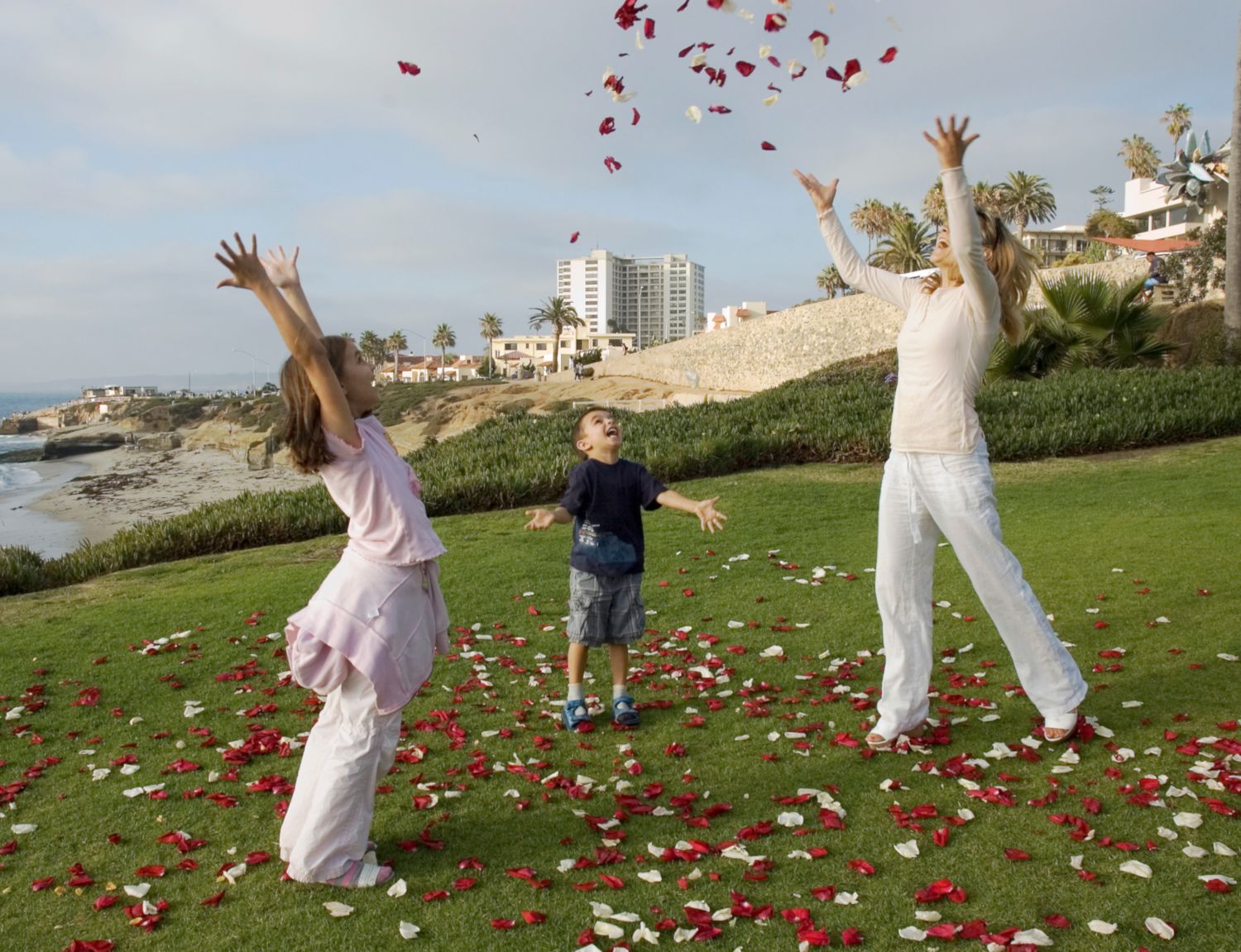

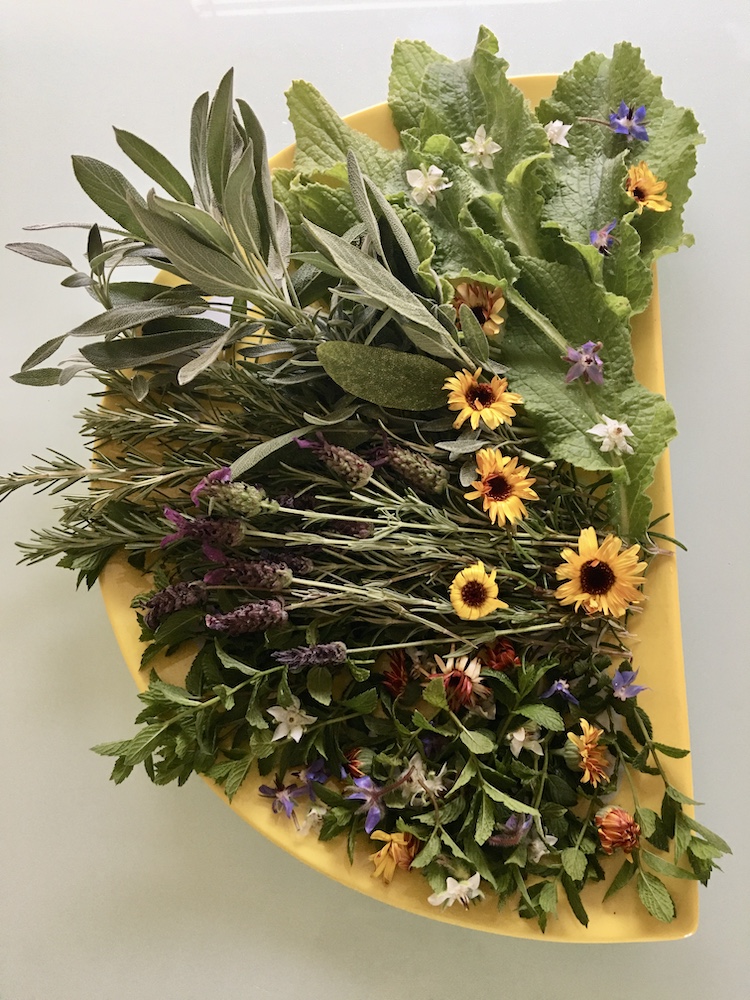

3 replies on “How To Grow a Native Garden”
Hi Judith, Monika Hartwig sent me the lovely article on your native garden. I loved watching the transitions through the seasons and the beautiful colors. Do you yourself consult with people about their landscaping? You mentioned that you had found a landscape designer who specializes in California native plants, and I wondered if you could share her contact information. I live in Palo Alto.
Hi Judith. I love your native garden! I have an almost native garden! I couldn’t see the red buckwheat though. I gave a very bright pink one and would like red! Where?
I don’t think the garden is ever finished! It’s so much fun to be in it!
Thanks for your detailed landscaping article Judith! I have been interested in native plants for awhile, but I haven’t seen a garden yet that has made me want to plant one. I really like the way your rectangular garden was carved up with stones and plants. And I will check out the tour, or information for when it might happen in the future.